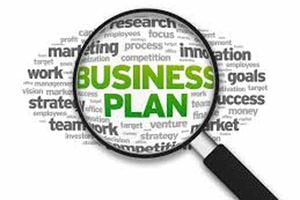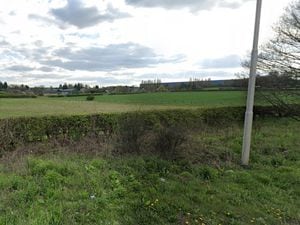Writing a business plan - part two
A few weeks ago I wrote Part one of the introduction to writing a business plan. Here I will continue to go through the final stages of this so that you will have guidelines to writing one. Remember, this is just a guide, and my interpretation of how to write it.

Part one of the business plan.
5. Marketing Strategy
Previously in Section 4, we discussed the principal elements that make up the environment, competition and company. Once these details are finalised we can then approach the strategy of how we are going to market the company. This is one of the biggest and most important areas of the business plan. It contains many different aspects of marketing.
There are a few basic strategies that can be used for marketing
Penetrate new markets
Increase the share of existing markets
To establish a strong, firm position within the market
To withdraw from the market
In order to be successful in your market, you need a way of measuring your success. This can be done by setting a number of strategic objectives:
Sales objectives
Number of trading clients
Profit or margin objectives
Percentage share of the market
New area penetration
New product launches
Product withdraws
Once you have identified the objectives for the business then you can look at the main elements of marketing which are: product, price distribution, and promotion.
Product
There are three types of product decisions that can be made.
Create a new product
Modify an existing product
Withdraw a product
These decisions are based in the sections which you have researched previously which investigate the current market and look at factors which as competition, environment and any gaps in the market.
Price
The common pricing objectives can be broadly outlined as:
To make a profit on the current capital investment
To make a profit on sales
To gain a percentage share of the market
There are three main pricing strategies:
Price low for penetration
Price match for the competition
High pricing
These pricing strategies can be seen across many market sectors. They are usually applied in the following ways:
Generally across all products
With each line of product having a different pricing structure
With each product being independently priced
By geographical area
Distribution
Distribution is the mechanism that moves product or merchandise from production to the consumer.
All products can be sold the same way or through different lines of products, different market segments, or distributors. Certain geographical locations may differ in the type of distribution used and may be better covered through the use of a distribution channel.
The distribution channel allows the business to access a market, to transport and sell the products to the consumer. This is usually done through one of the following methods:
Direct sales to the end user - Through a reseller who use may use agents, retail or wholesale methods.
Agents – help to organise the distribution of the product by using other services to facilitate the sale process.
Distributors – these are companies which are established and authorised to supply products in a geographical area. They will usually sell to large clients or use retail and wholesale where appropriate.
Wholesale – usually buy the product and sell it onto other retailers or other wholesalers. Usually the wholesale buys in bulk and as such gets a cheaper cost per line item.
Retail – sell the product to the end user or consumer. They can acquire the product through any of the channels above depending on their location, activity or product types.
Franchising
This is the final method of distribution that is used by many businesses today. Franchising is a set formula that is governed by the franchisor that is issue to a franchisee who is responsible to follow the formula and provide the necessary operational support and advice as well as advertising or promoting the product. The franchisee has to pay the franchisor royalties which is often initiated in a buy in fee.
Promotion
Finally there are methods of promotion which you need to establish in your business. These are:
Personal sales
Sales promotion
Advertising
Public relations
Social media
As a business, you may find that historically a dedicated sales function may have worked for your business but in recent times, social media would be a more preferred option.
Tips: Be direct. Explain the essential characteristic of the products and how they satisfy the needs of the market, and don't be too technical
It is very important to define the distribution strategy. If you are not aware of any of the methods described above then research these. Many products have not been successful due to this part failing.
If you need a promotional budget then be realistic with it, especially if this is a new product in a new marketplace.
This forms the heart of the business plan, and should be very thorough and thought out with figures.
6. Success Factors
This section is very important as it provides a summary explaining why the plan will succeed. You could have a good marketing plan, sufficient capital and a strong product, but what makes all the things you have to offer different? Is it your style, or have you identified something which is unique?
You need a unique selling point, or points for your plan. What do you have that will make it succeed?
These factors could be very different, for example:
Strong initial advertising
The ability to compete effectively
Quality of service
A product or products with their own unique selling points
Pre-agreed channels and volumes
Capacity to innovate or modify products quickly
Exclusive distribution channels
All businesses, from fruit shops to car manufacturers, cafes to banks, have their own success factors and in many cases there is only one factor that creates this success. My success is based on the experience I have across a wide field of IT areas, and working with many different businesses including retail, events, finance, legal, managed services, and local authorities to name a few. I can see the benefits and pitfalls of these so I can highlight what is a strong point in a business and what is a weak point.
For a hairdresser it could be the quality and price, or just the quality; for Ryan Air it is the price; for Ferrari the quality and status; for a builder a specialist area of expertise. The secret is to identify these points and then to highlight them.
Tips: Write only the important points, be brief. Each sentence is important, if a sentence does not hold any information then remove it.
Throughout the business growth, you should be asking yourself: "What does success look like?"
7. Financial Analysis
This portion will cover the financial aspects of the business plan. Although some of the information in here may be related to previous business activity that may not apply, it is useful to provide some estimation to forecast potential earnings. The financial analysis should include any forecast for the next three to five years if possible.
Profit and loss statement for the previous years, or forecasted if this information is not available
Balance sheet for previous years (if available)
Fixed and variable cost projections. It is better to do research into this for a new company and thoroughly explore the costs associated.
Estimated sales projections
Projected cash flow analysis
Projected profit and loss statements and projected balance sheets
As mentioned, a lot of the information here is based on past performance from a business. Although not important in most cases of a new business, it is always important to consider these factors.
If you do have access to previous trading then the following areas may help you to plan financially.
If you have been trading previously, company history is imperative when projecting future success.
The profit and loss accounts give a picture of a company's trading performance over a period of time in terms of income, sales and expenditure.
As with the balance sheet a historical perspective will provide a sound basis for future projections.
A balance sheet is a snapshot of a company's assets that are owned by the business and also contains liabilities - this is what is owed to other third parties from the business.
Total assets should always equal total liabilities, hence the 'balance'. The amount of earnings in the business should be enough to cover the cost of the liabilities.
Establishing the fixed cost and the variable costs, when put together with the sales figures will establish the running cost point of the business, which is the point at which the business starts to make a profit.
Using any information, historical or statistical, you can combine this with your knowledge of the products and the market.
A cash flow statement, usually constructed over the course of a year, compares your cash position at the end of the year to the position at the start, and the constant flow of money into and out of the business over the course of that year. A cash flow statement deals only with the money circulating in the business. Projecting cash flow for a three to five year period will provide a useful tool in establishing whether your business is eating up cash or generating cash.
Using the projected sales and expenditures you will be able to put together a projected profit and loss statement.
Projecting a balance sheet allows you to see the funds that will be required as the business matures
Tips:
Make sure all graphs and charts are clear and well laid out.
Prepare all information by year for a period of three to five years.
Display at least the first year of cash flow information by month.
Use accounting terms where appropriate, and always be clear when expressing a point.
If you are stuck, use an accountant
Finance - Here you need to lay out the capital you require to start the business. Don't just think about what you need in the start-up phase, but also think about any further investment needed at a later date, which if requested at the time when required will be seen as a failure to plan properly or a failure to execute your plan effectively.
These are the basic ways of obtaining the finance you will require:
Business associates
External investors
Finance companies
Public grants
8. Conclusion
Now you have made it to the end of the document, congratulations!
For this section, summarise the points which you have discussed and what you feel is most important. Ensure that the summary notes of the business plan are ready to be deployed and executed for the business.
Tip: Be brief
Now this is over, there is a vast array of information to gather, people to get advice from and businesses who can offer support.
See the original post on Kevin's blog Worton Tech.





